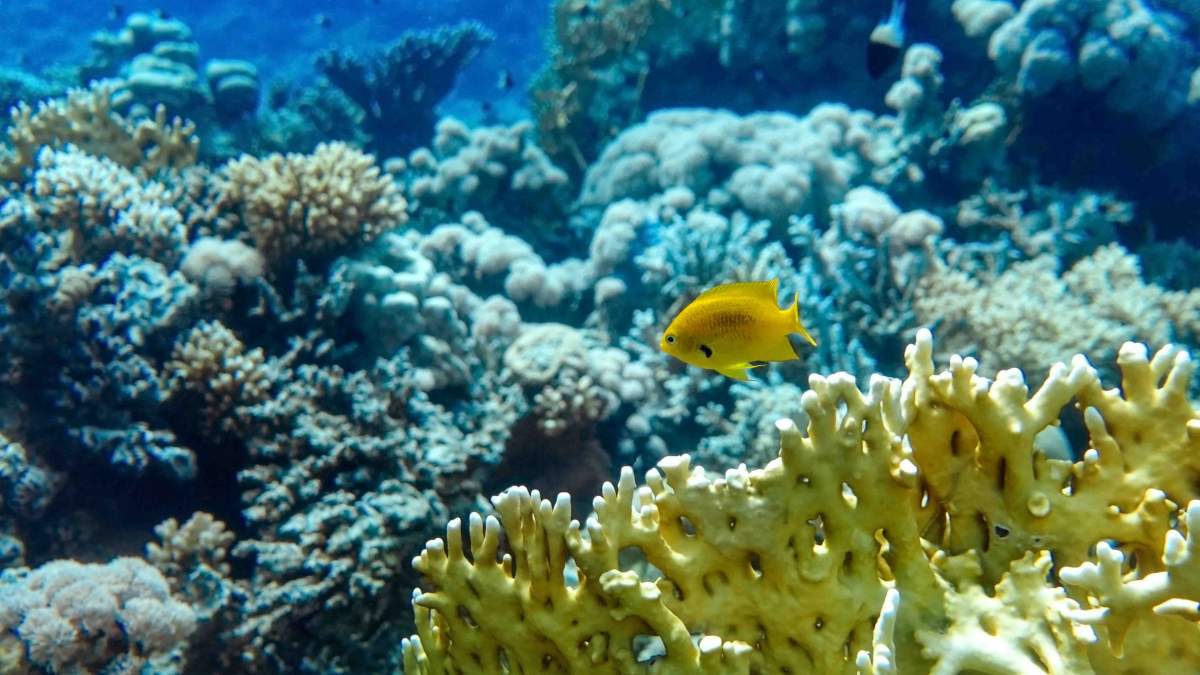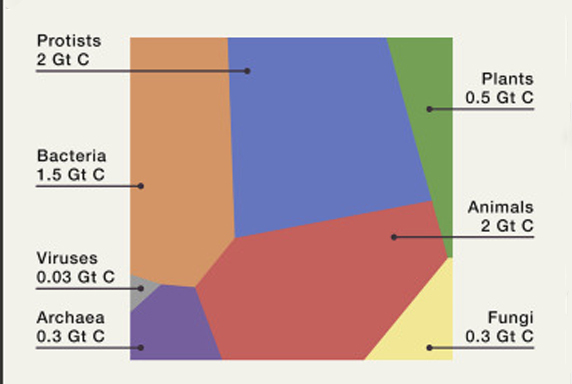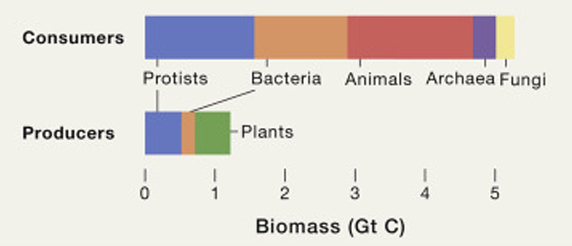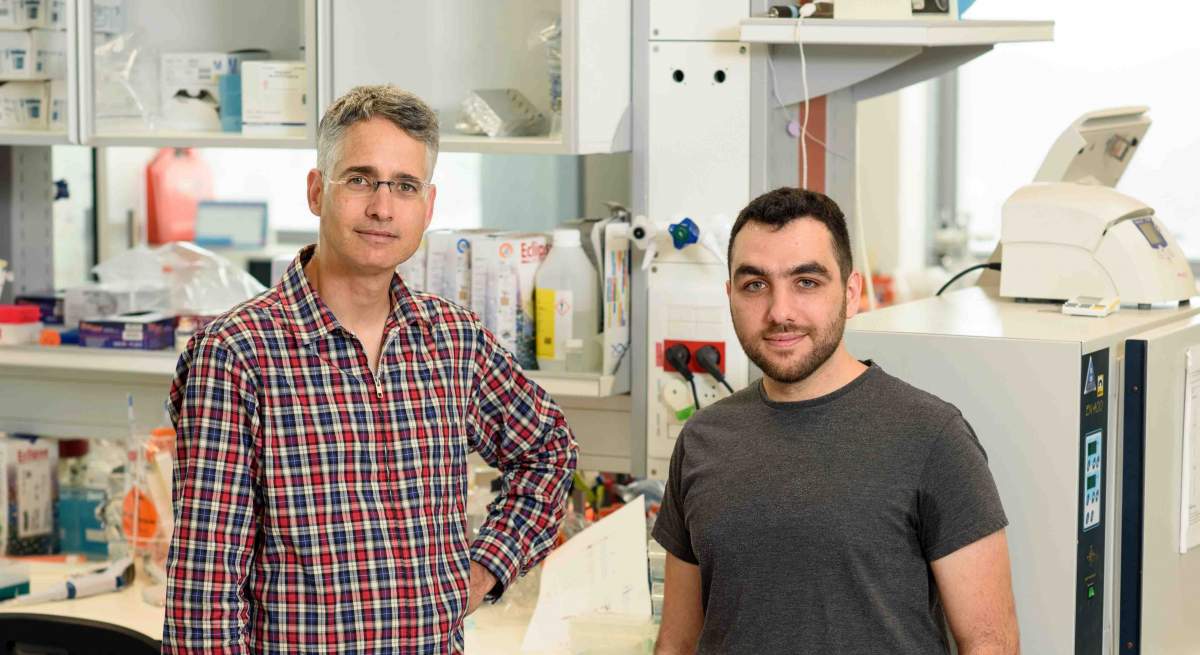A new census asks why the oceans have so little biomass compared to land, and shows how small marine producers pull their weight

Coral is made of two symbiotic organisms: It is both a biomass primary producer and a consumer
If you took all the fish in the ocean and weighed them, how much biomass would that be? Now add all the crabs and herring, the tiny krill and the giant whales that feed on them, the marine bacteria and plankton. That is still far below the biomass on land, and a new census of life in the ocean ‒ by dry weight ‒ provides some clues as to why this came to be. The insights emerging from an analysis performed at the Weizmann Institute of Science may help researchers understand, among other things, how carbon gets absorbed and fixed in the ocean’s biomass and how future changes may affect that biomass. The findings of this study were recently published in Cell.
The census, conducted by Yinon Bar-On and Prof. Ron Milo of the Plant and Environmental Sciences Department, arose from a previous, near-encyclopedic project, in which these researchers had counted the biomass of all life on the planet, charting it and comparing between various groups. One of their more surprising discoveries was that plants account for around 90% of the biomass on Earth, but the tables are reversed in the ocean, where plants account for only a small fraction of the biomass.

Plotting the ocean’s biomass shows protists are the marine heavyweights
In the present study, Bar-On and Milo decided to dive deeper into the question of biomass in the oceans. Bar-On says: “Our detailed analysis supported the original ratio we found between life on land and in the oceans, but there were new surprises when we analyzed our figures.”
Starting with photosynthetic organisms that take in the sun’s energy and use it to live ‒ known, collectively, as producers ‒ Milo and Bar-On found that the division into producers and consumers tends to be more fluid in the ocean than on land. Some groups, like bacteria and protists (microorganisms with walled nuclei in their cells that are not plants, animals or fungi), have members that are photosynthetic and members that are not. And coral, for example, is symbiotic and only one member is photosynthetic; others reuse the chloroplasts from bacteria they eat as internal “farms”; while some bacteria perform partial photosynthesis that is barely enough to run their base metabolism. These “lazy” bacteria may have hit on a fine strategy, as they make up a significant portion of the bacteria in the ocean.
What these producers lack in mass, they make up in rapid turnover
Still, if the main biomass on land belongs overwhelmingly to the plant kingdom, this is not the case in the ocean, where producers, all together make up around 20% of the biomass. When the researchers sorted marine producers into three groups – bacteria, plants and protists – they found that photosynthetic protists shared first place for total biomass with plants, while photosynthetic bacteria took third.
Among the animals, top ranks in the ocean biomass went to the crustaceans, a group that, in addition to shrimp, crabs and lobsters, includes the tiny, shrimp-like krill and copepods that are a crucial link in the food chain, eating the photosynthetic microorganisms and getting eaten by everything else. Fish, from sardines to sharks, and marine mammals such as whales accounted for a smaller proportion of the marine biomass.

Producers vs consumers: The ocean’s “food pyramid” is shaped more like a “top”
These findings show that, as opposed to the land-based food “pyramid” with plants at the bottom and dominant consumers like humans at the top, the marine food picture is shaped more like child’s top, with a small base for the producers and a wider middle made up of krill and other organisms that feed on the photosynthetic ones. Bar-On explains that like the base of the spinning toy, what these producers lack in mass, they make up in rapid turnover. Since they grow and multiply so quickly, relative to plants, they can support more than their weight in organisms further up the food chain. That is also why, even though they add up to a fraction of the biomass, the ocean’s producers are big eaters of global carbon dioxide. They fix as much of this greenhouse gas as the land plants, and release as much oxygen into the atmosphere.
The researchers think that these differences between land and sea may have come down to a challenge all producers face: competition for sunlight. On land, bulk enables plants to grow vertically, giving them an edge over shorter ones. In the ocean, however, small, lightweight organisms that float on the surface have the best access.

(l-r) Prof. Ron Milo and Yinon Bar-On
What does all of this mean for our understanding of the oceans? Bar-On and Milo call the census a “blueprint.” It is a best estimate of the current situation as well as highlighting areas of uncertainty. “Predicting the future,” says Bar-On, “requires a good grasp of the present, especially when we are only now coming to understand the possible ramifications of continuing human interference in the oceans.” “Providing a new way of understanding, revealing almost at a glance the relationships between marine lifeforms,” adds Milo, “we hope this study will also inform decisions affecting all of the services this life provides the planet, from food to the makeup of the global atmosphere.”
Prof. Ron Milo is the head of the Mary and Tom Beck – Canadian Center for Alternative Energy Research; his research is supported by the Zuckerman STEM Leadership Program; the Larson Charitable Foundation New Scientist Fund; the Ullmann Family Foundation; Dana and Yossie Hollander; and the European Research Council. Prof. Milo is the incumbent of the Charles and Louise Gartner Professorial Chair.

Recent Comments